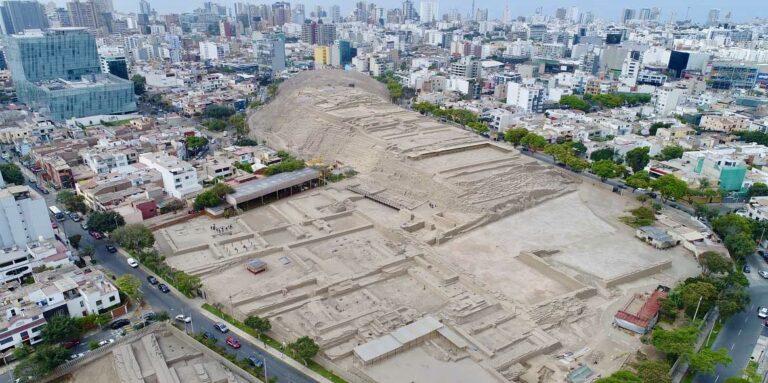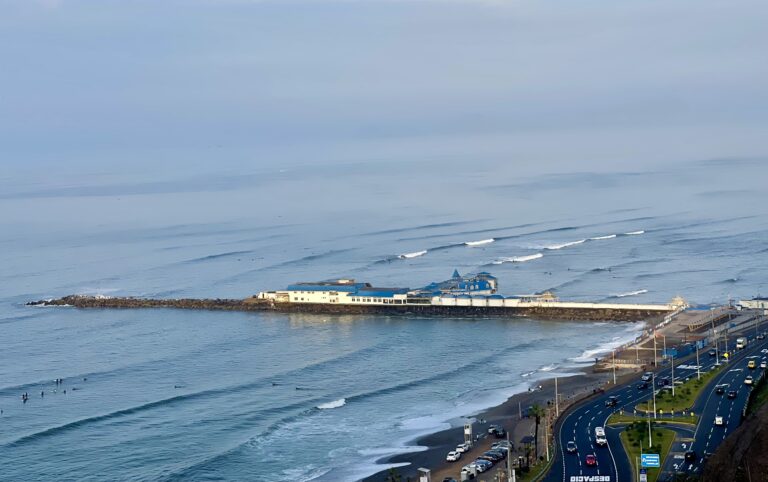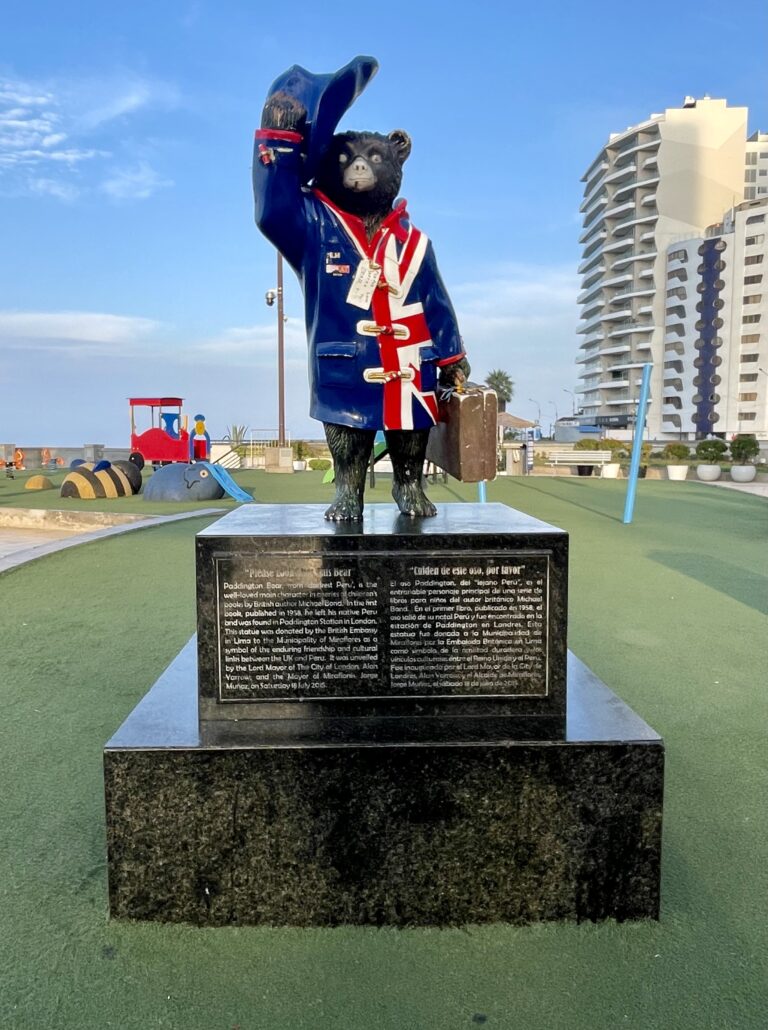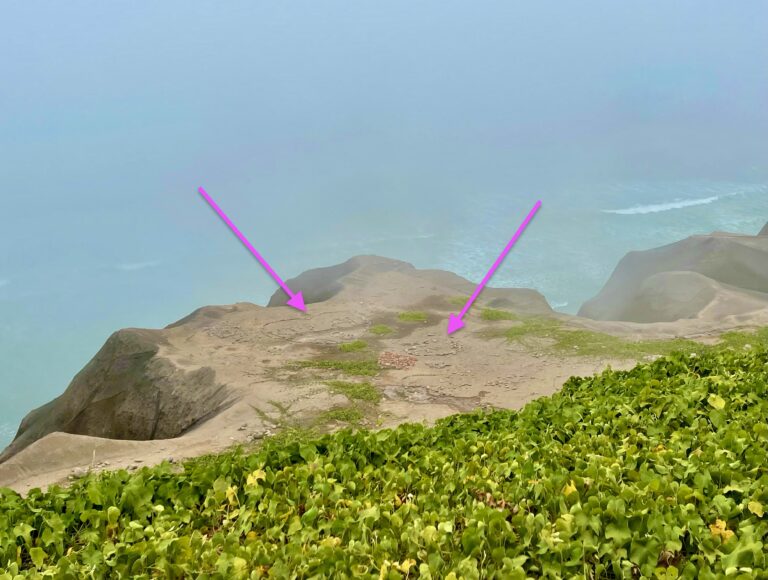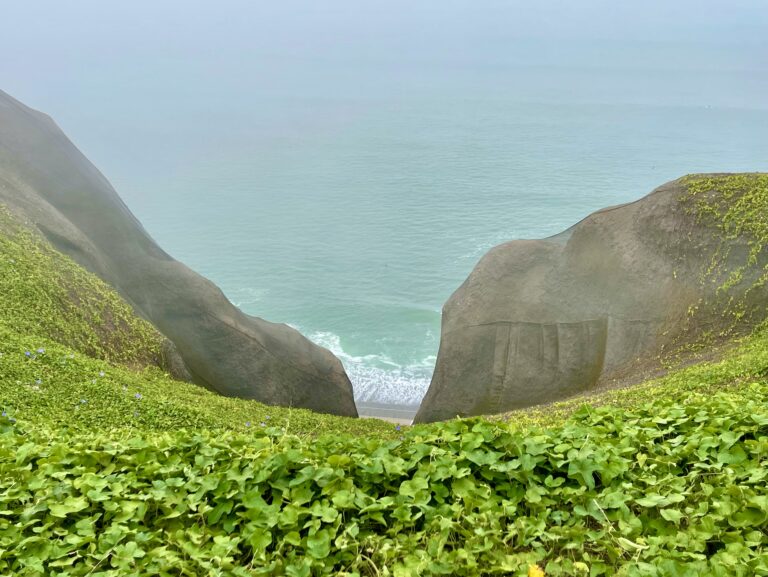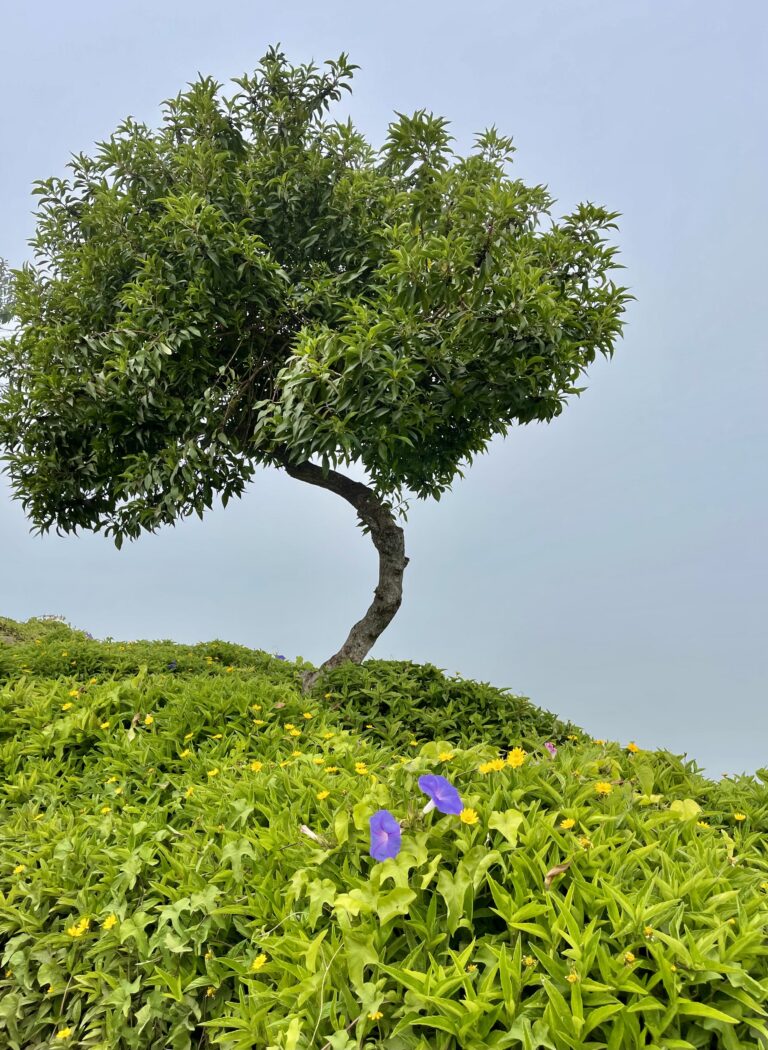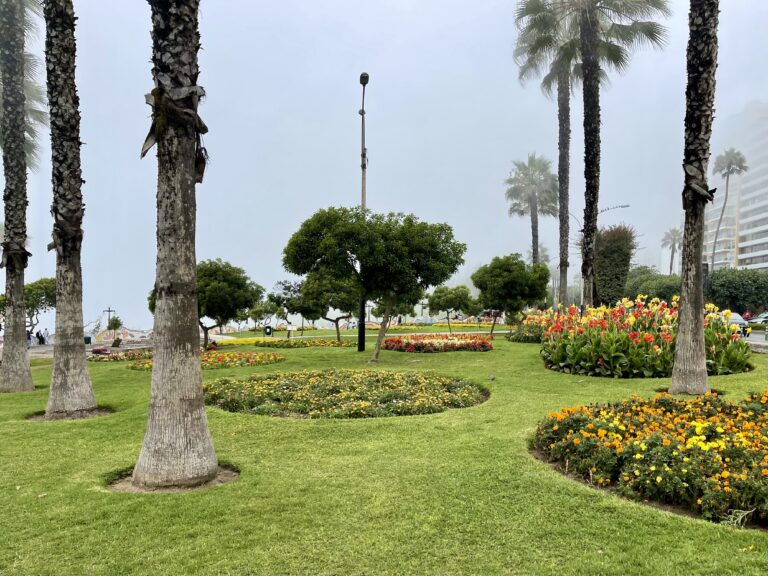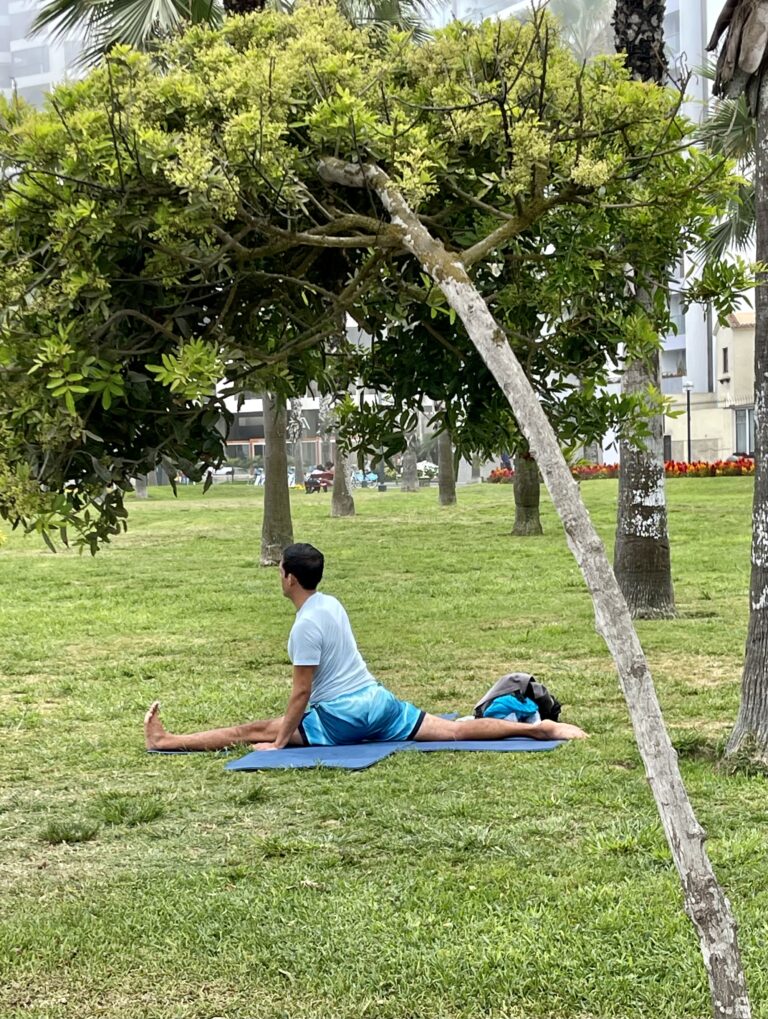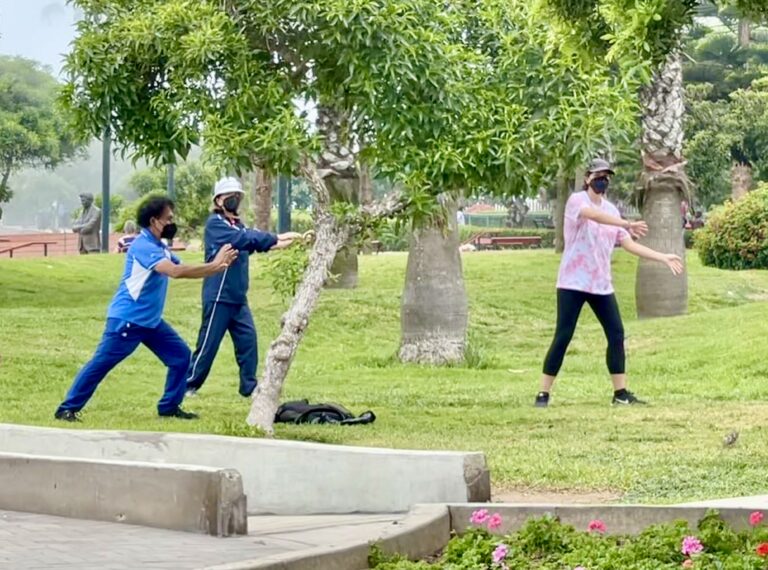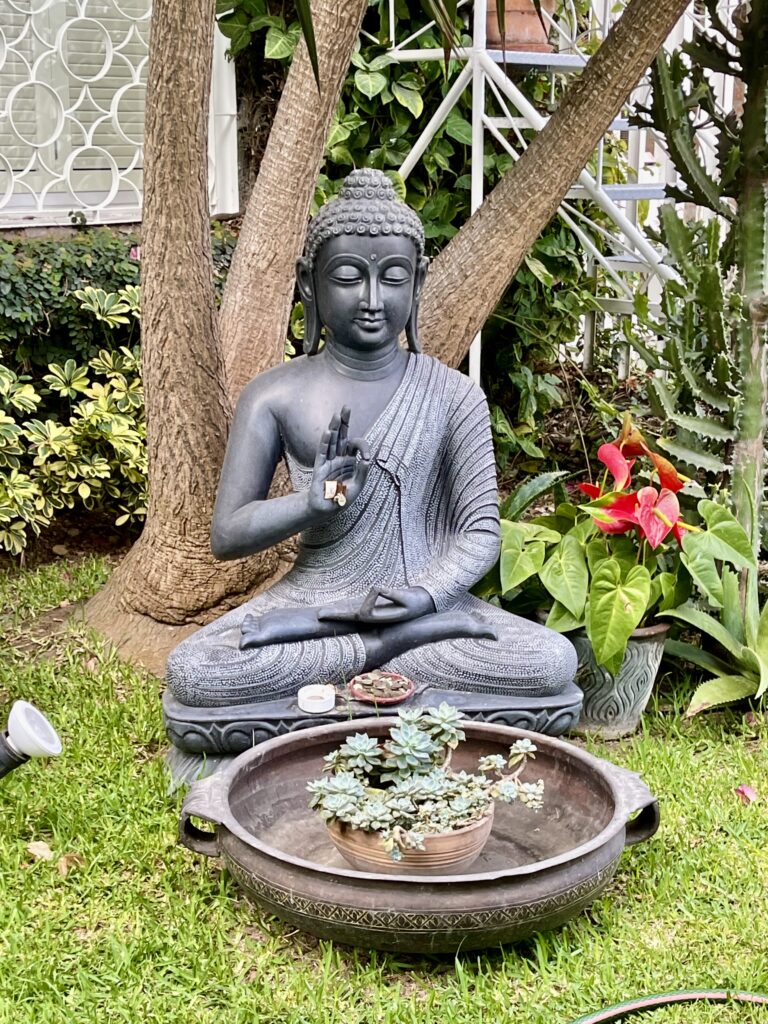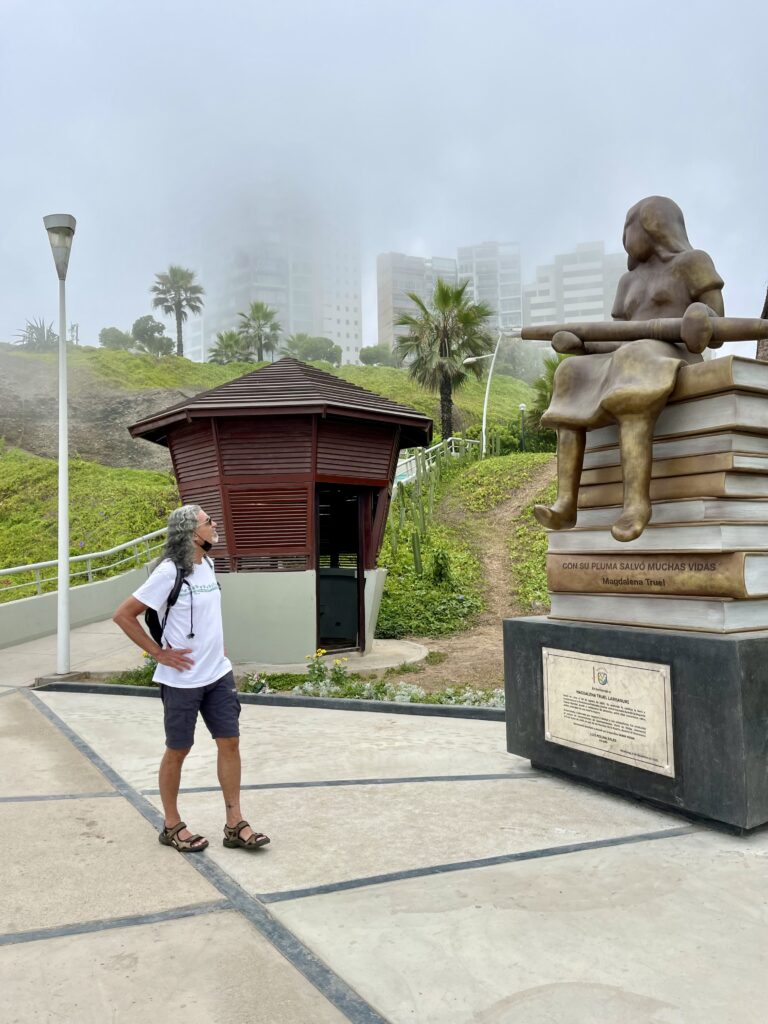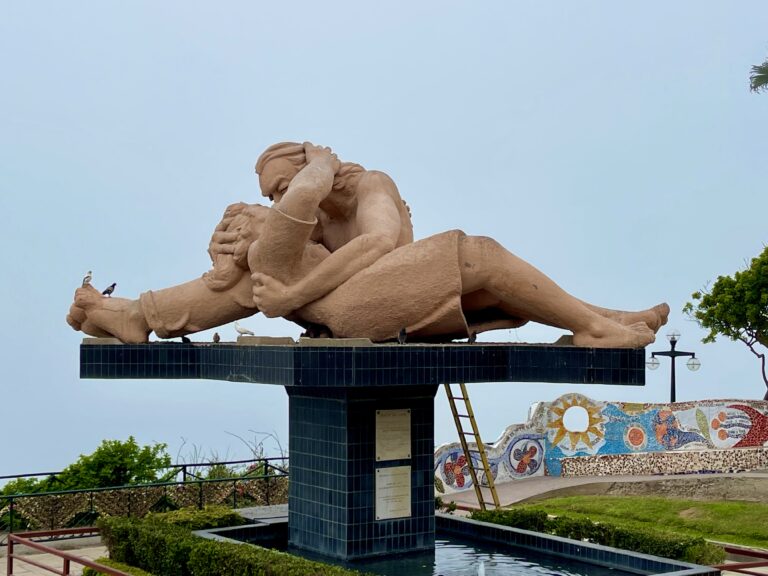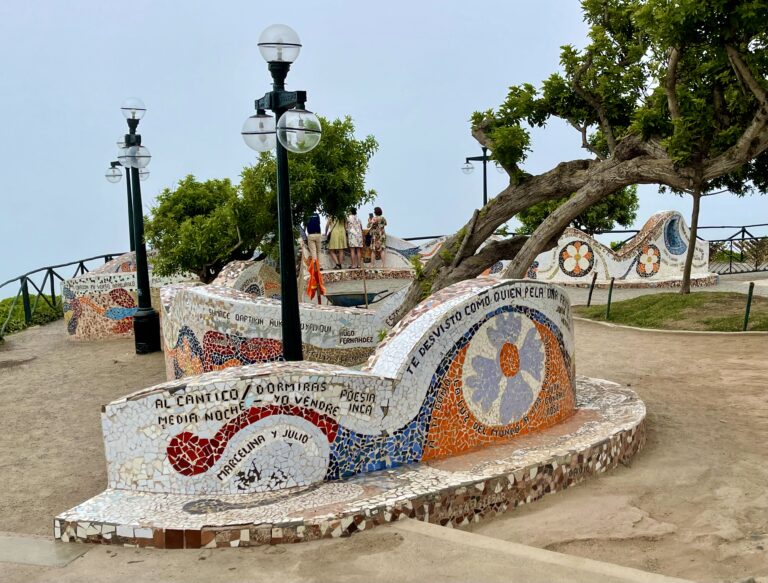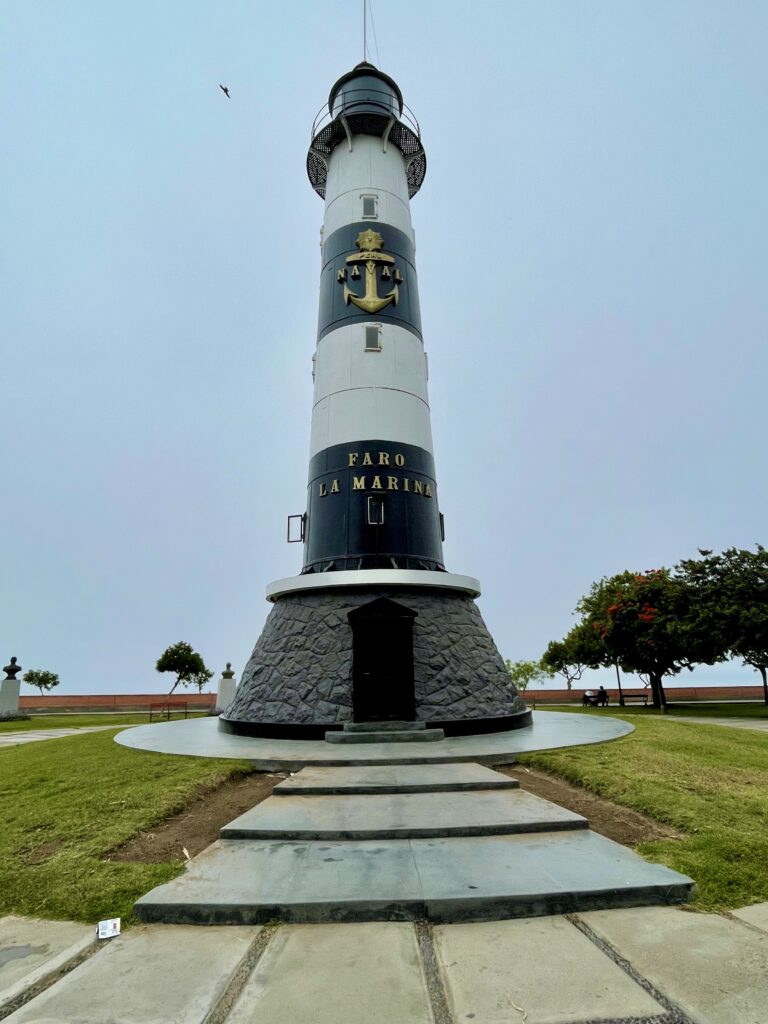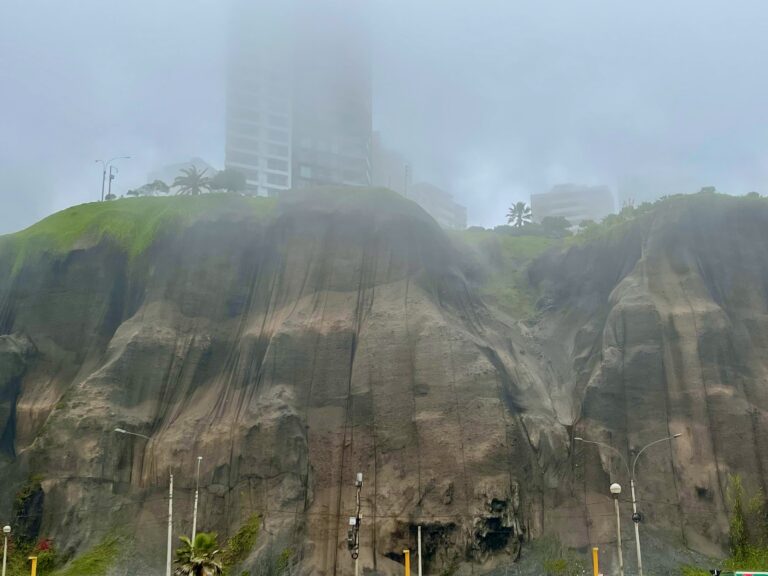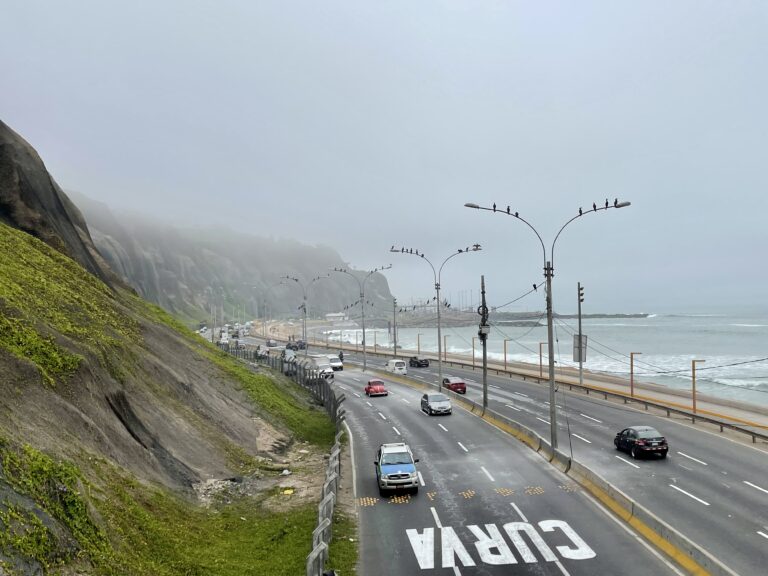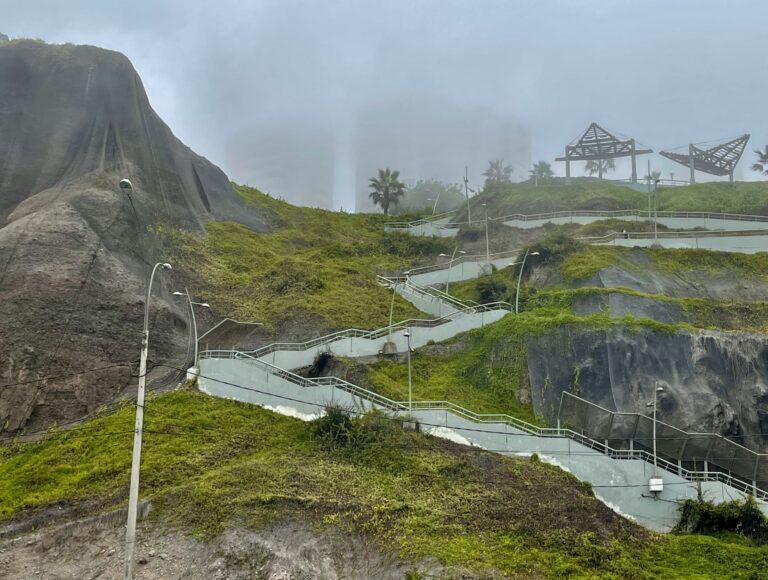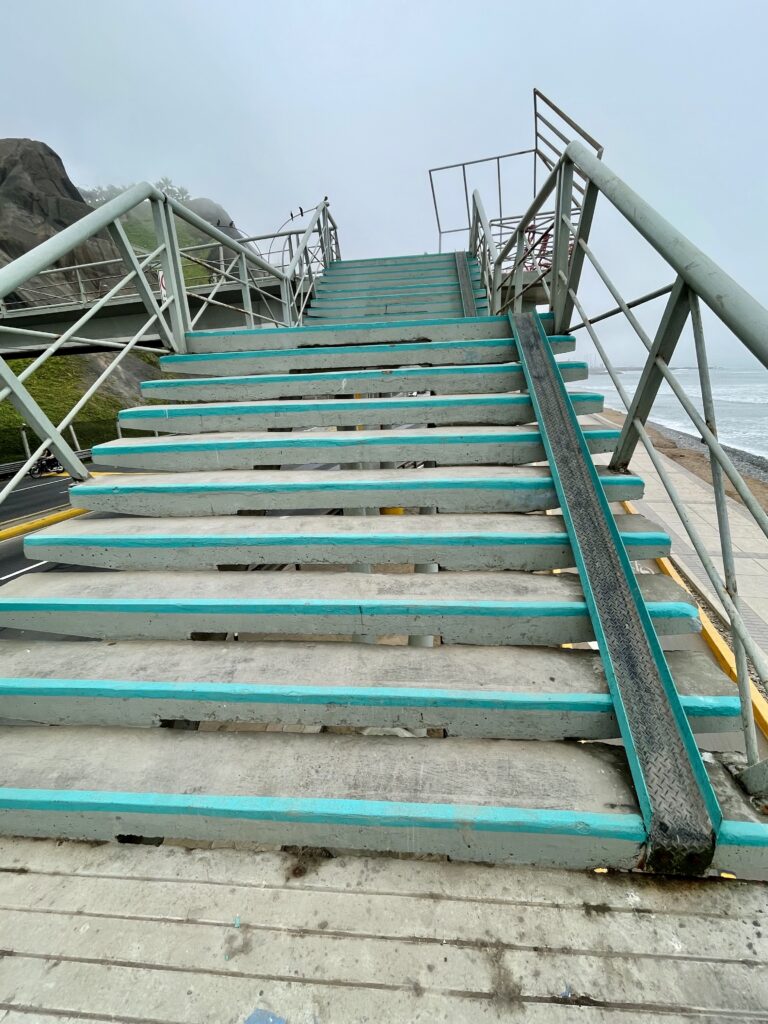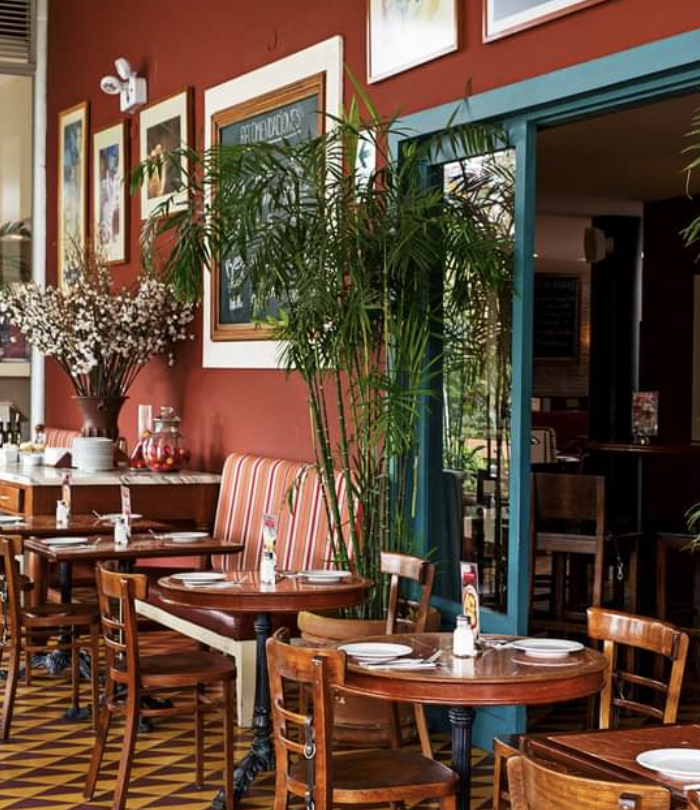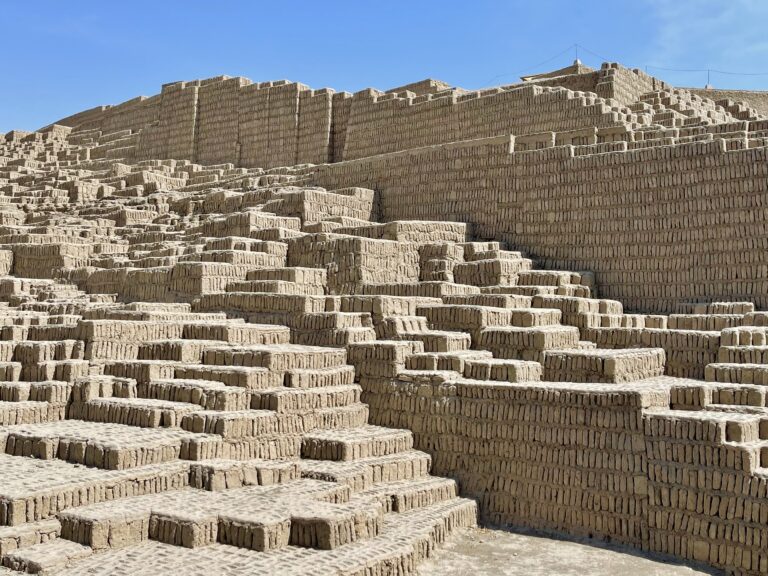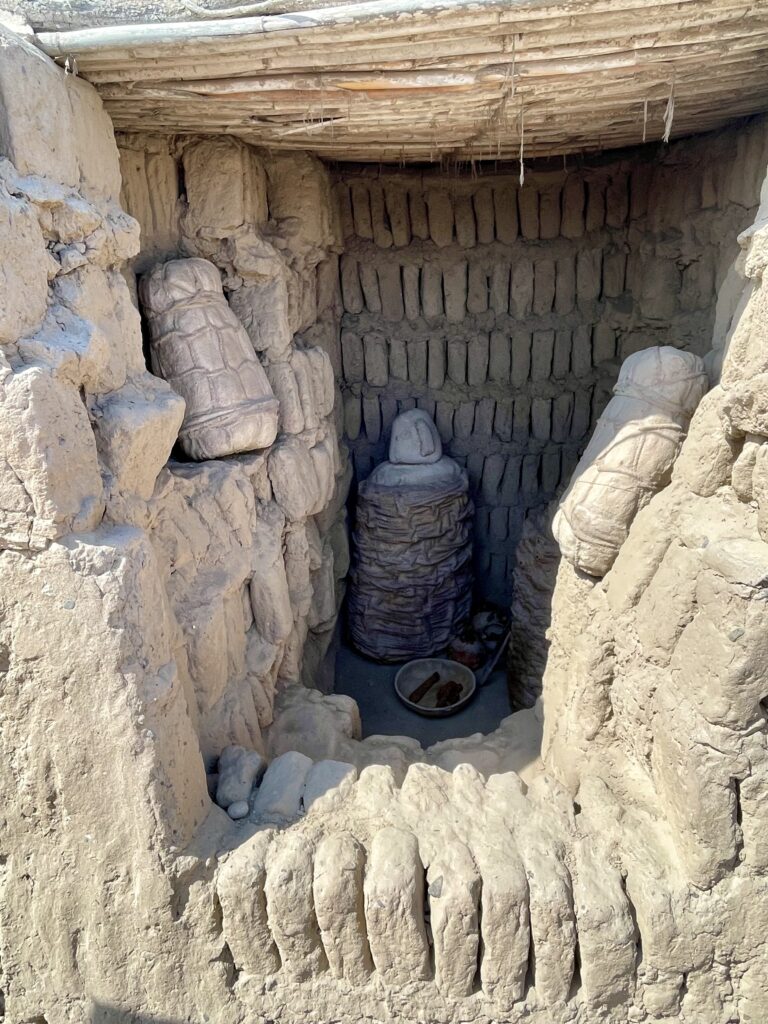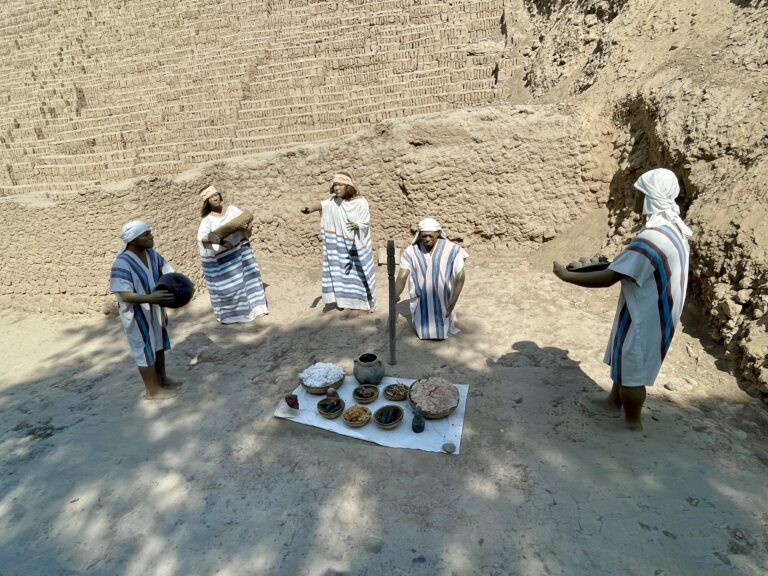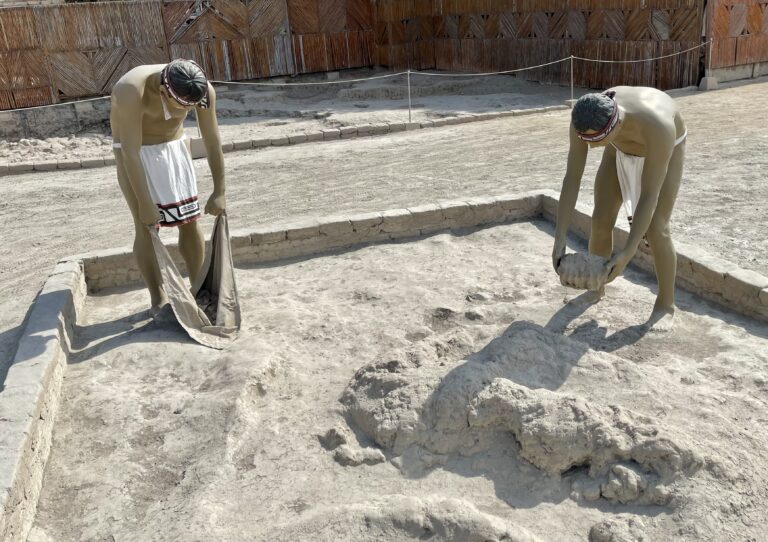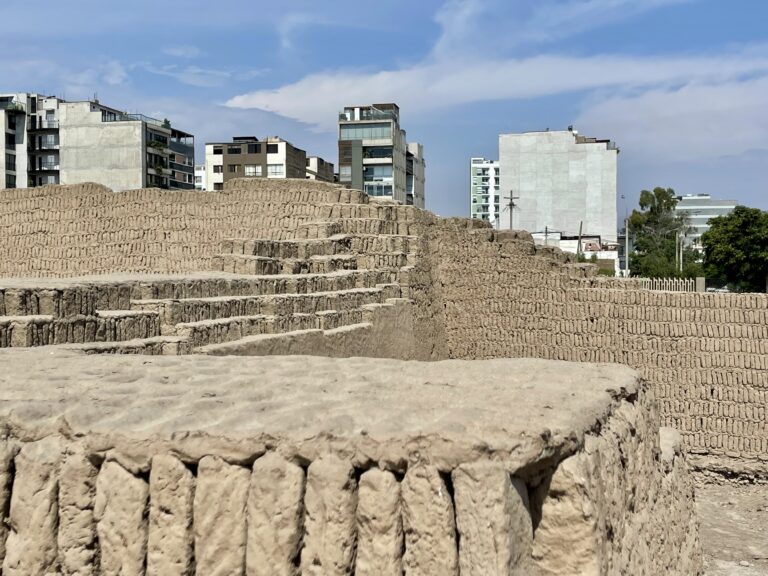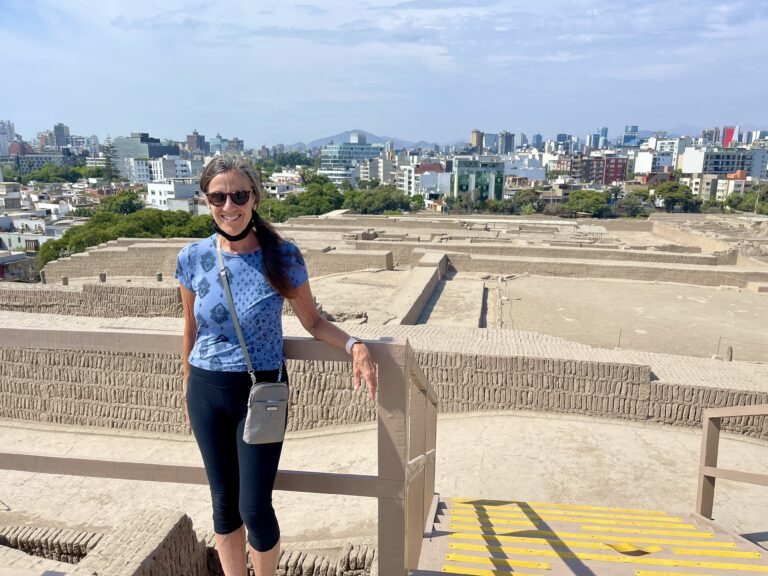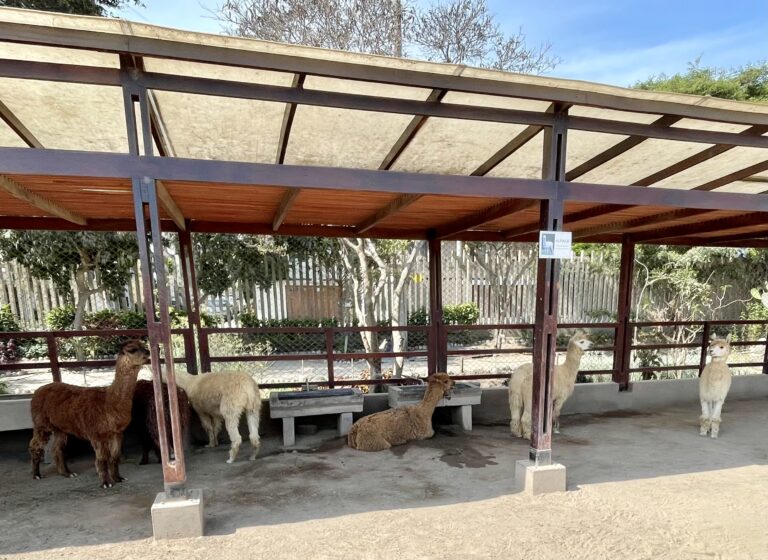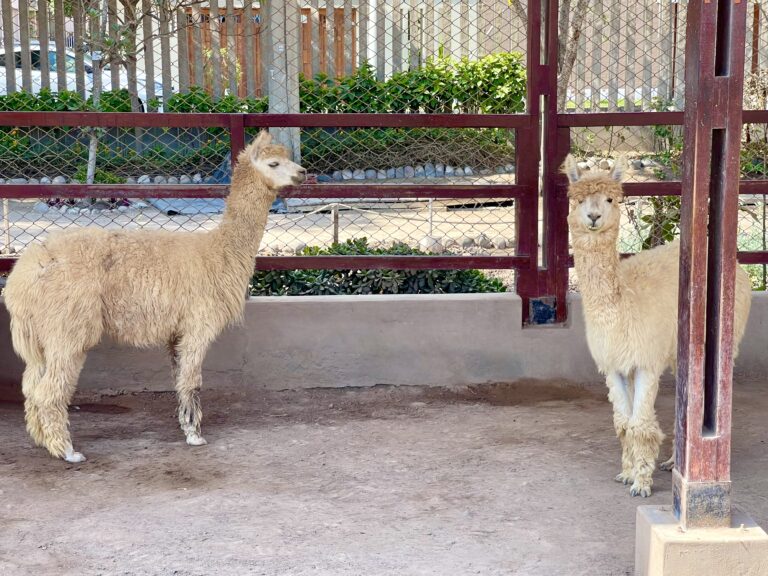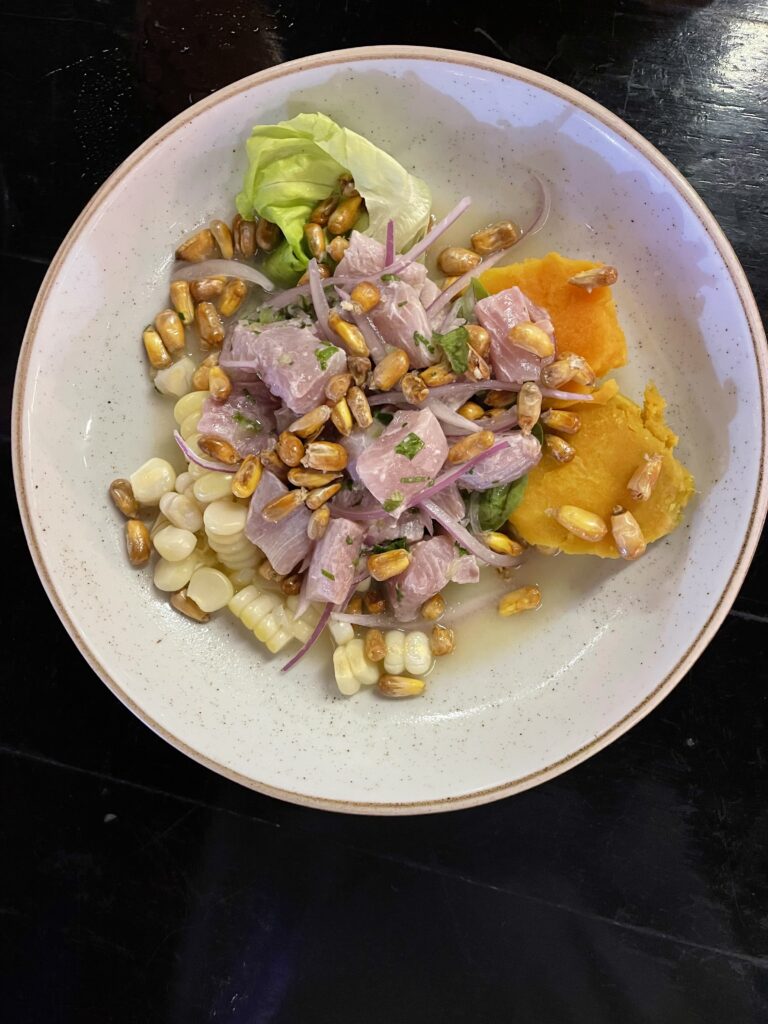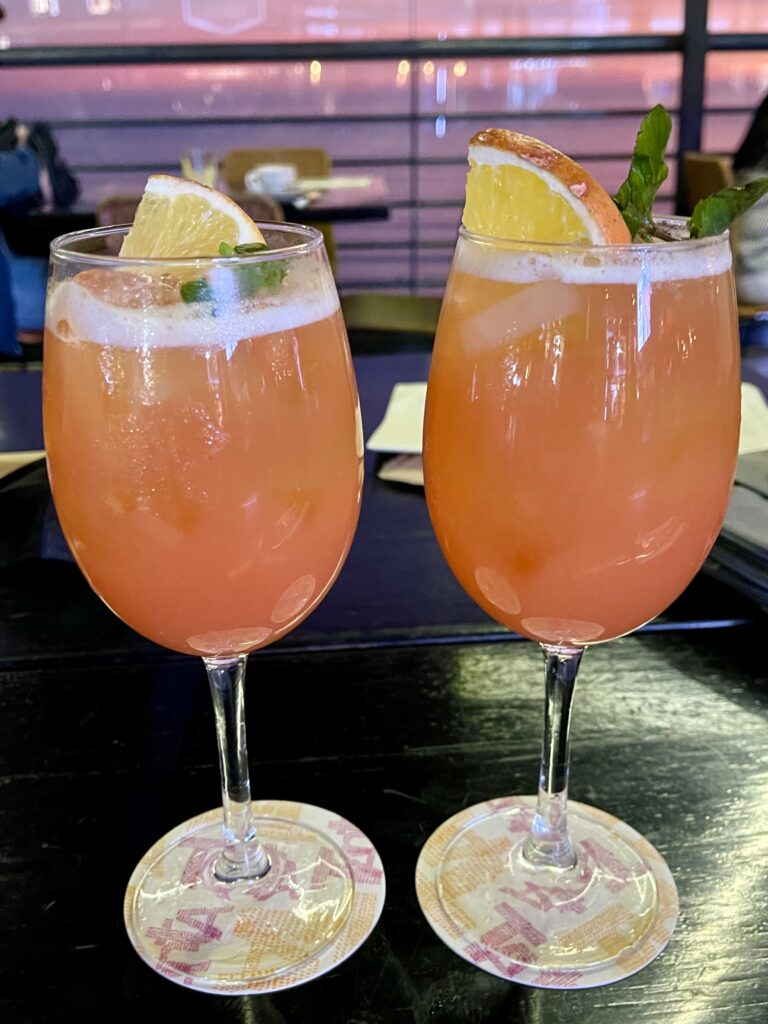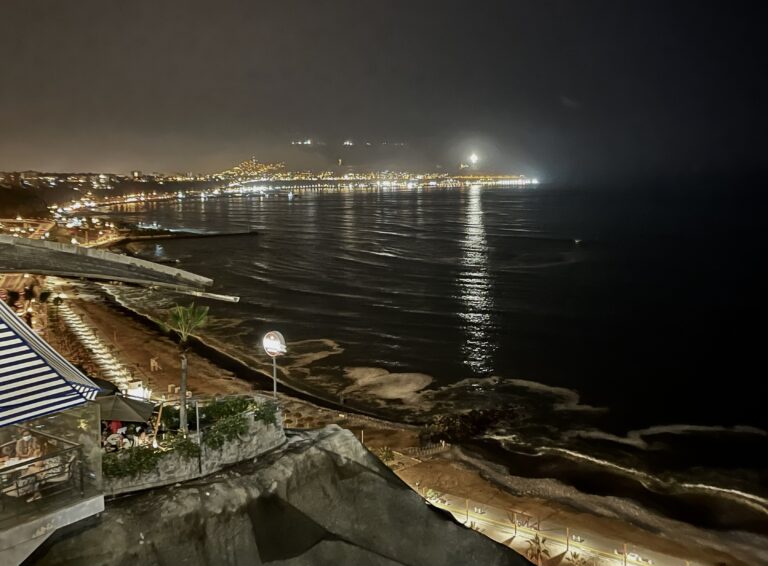February 7, 2022
We woke up again to perfect weather. It was summer here and we were told the winters could be dreary with fog and mist and “cold” high temperatures of barely 70. On the other hand, even in winter there is very little rain. In fact, Lima is in a desert and often has barely measurable rainfall for the entire year. It’s never really cold in Lima. Or hot.
We woke up early again and decided to take another early morning stroll to the oceanfront before breakfast. It was only about 6:30 am and temperatures were in the low 60’s, but it was sunny and we stood at the cliff’s edge, gazing down at distant surfers near Miraflores’ large pier that we were told housed a large seafood restaurant.
In a nearby children’s park we came upon the most curious of statues—Paddington Bear, of childrens’ books fame. Why was Paddington, dressed in his raincoat with a British flag design in a small park along the Lima waterfront?
We read the dedication, which explained that Paddington’s journeys began when he left his native country of Peru and ended up at Paddington Station in London. The dedication also said that the British embassy had donated the statue as a symbol of the friendship between the UK and Peru.
Back at the B&B, we enjoyed another outstanding breakfast served near a pretty courtyard. There was fresh fruit, yogurt, eggs, meats, cheeses, pastries, excellent coffee and the best hot chocolate I’d ever had. The staff at the small inn were amazing and offered to bring our food to our room if we preferred, which seemed to be what other guests did, as we rarely saw them in the morning.
As our readers undoubtedly have figured out by now, we love to explore places on foot and Lima is one of the most walkable big cities we’ve ever been in. This day, like the last, we’d walk over 10 miles.
After breakfast, we took a long walk along the Miraflores Malecón—a scenic path that meanders along the coast for miles. It’s a beautiful wide, paved walkway perched one-or-two-hundred feet over the main highway below, providing spectacular views of the cliffs and the the sea.
Many well landscaped parks and green spaces dotted the malecón along with several pathways to access the highway and shore far below. As we walked from one park to the next along the coastline, a thin fog rolled in but it didn’t make us chilled like fog usually does.
There was a surprising Eastern influence in Lima, as revealed by a guy practicing yoga on the grass, a small group people doing Tai Chi nearby, and a buddha statue by a tree.
There were several structures in the seaside parks as well, including mosaic walls and a lighthouse.
From there, another wide walkway paralleled the ocean with its pebble and rock beaches. Surfers were out in force on the five-foot waves, most in wetsuits because of the frigid water, made cold by the Humboldt current (the same one that makes California’s waters so chilly).
We walked along the coastal trail for about a mile, then headed back up hundreds of stairs on a different path up to the malecón again. Once we reached the top, we headed inland out of the fog and through a quiet residential section of Miraflores with slightly older high-rise condos and less-busy streets.
We eventually stopped for lunch at a cafe, La Bodega de la Trattoria. The cafe was located across from downtown Lima’s ancient pyramid, Huaca Pucllana, where we had a scheduled tour soon after.
Huaca Pucllana is a giant adobe and clay pre-Incan pyramid with seven staggered levels built from 200 AD to 700 AD that’s within the city limits of Lima. Earlier, we’d signed up online for an English-speaking tour and we paid a small fee at the entrance where we gathered to await our tour guide. The guide arrived and led our small group along a path into the heart of the enormous archeological site. Sadly, our guide was saddled with two problems: she was completely uninterested in the tour that she’d obviously given many times, and because of her heavy accent, soft voice and double face masks, we could hardly understand her.
But the only way to enter the huaca was with a tour so we followed her up and around the pyramid and archeological site. Surrounding us were millions of adobe and clay bricks, built into multiple structures for ceremonial and administrative uses many centuries ago.
We walked around the impressive structures where we’re pretty sure our guide said (in her bored, garbled voice) that some areas had been used for a variety of sacrifices, including of young women and even babies. Other sections were used to store grain, house the powerful clergy and bury the elites.
There were life-size dioramas showing food being prepared to give to the deities, and others showing how the bricks used to build the pyramid were made.
A block away were neighborhoods and, a little farther, new high-rises. The juxtaposition was startling; it was a crazy feeling being inside an ancient pyramid a couple hundred feet from a pizza restaurant. The entire area, we think we were told, had been excavated only since the 1980’s and squatters were recently forced to leave when it became an historical park.
One section of the site was dedicated to growing crops that would have been part of the ancient diet and keeping animals that were domesticated at the time, including alpacas and llamas.
After out tour, we meandered back to our inn and rested for a while before heading out to dinner. We’d be leaving the Miraflores part of the Lima the next day, so it was time to finally try the food Lima is known for—ceviche. Susan and I are not fans of raw fish but ceviche is not actually raw—it’s “cooked” by soaking in lime juice. So, we decided to be brave. We were so glad we did! The fish was a local one we’d never heard of and it paired well with a couple of passion fruit pisco sours. All in all, a perfect meal.

